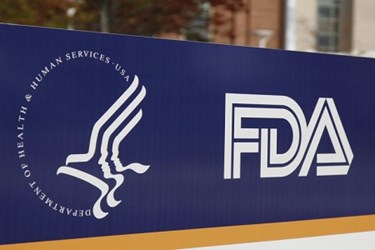FDA Finalizes Guidance On Benefit-Risk Factors Influencing Device Availability, Compliance, Enforcement Decisions
By Jof Enriquez,
Follow me on Twitter @jofenriq

The U.S. Food and Drug Administration (FDA) has finalized its guidance on benefit-risk factors to consider when making medical device product availability, compliance, and enforcement decisions across the total product life cycle. The document provides a general framework for FDA and stakeholders that sets forth overarching benefit-risk principles.
"By providing greater clarity about the factors we consider, we intend to improve consistency and transparency and to better align industry’s and FDA’s focus on actions that maximize benefit to patients, improve medical device quality, and reduce risk to patients," states FDA in the 32-page final guidance.
The agency issued the draft version in June 2016, with input from industry groups such as the Association for the Advancement of Medical Instrumentation (AAMI), to address key postmarket issues related to quality and safety.
FDA's draft guidance identified and described factors that the agency will consider in assessing medical device benefits and risks. FDA also provided hypothetical or simplified real-world situations to illustrate how it might come up with a decision based on the benefit-risk framework described in the draft guidance.
Much of the information from the draft version was retained in the finalized guidance.
A few changes were introduced, though. According to FDA Law Blog, these include:
- Clarifying that manufacturers wishing to provide relevant risk-benefit information, including data and calculations, should contact FDA or provide it to the FDA contact person for the matter.
- Adopting the definitions for serious injury and malfunction from 21 C.F.R. Part 803.
- Adding information on how FDA will assess uncertainty, a factor in overall benefit-risk assessment. The added language focuses on the real-world data being assessed, including its type, the degree to which it is representative of the intended use population, and statistical inferences and limitations.
As noted by the blog, also added as a hypothetical scenario for illustrative purposes is a case of a marketed OTC pregnancy test found to have a higher rate of false positive results than expected based on data submitted in the 510(k). Upon review of benefits, risks, patient tolerance for risk, mitigation, and patient impact, and considering the number of other similar products on the market, and the possibility that a false positive could delay certain medically necessary treatments, FDA deemed that the risks of continuing to make the affected lots available outweighed any potential benefits. The manufacturer notified retailers and distributors to remove the affected product lots under a Class II recall ordered by FDA.
FDA states that the benefit-risk factors in the final guidance also support assessment of medical devices with real-world evidence (RWE). For example, RWE may show that surgeons have found additional uses for a surgical tool originally cleared for hernia repair surgery that may lead to clearance of new uses, thus increasing the types of benefits.
The agency adds, "when making medical device product availability, compliance, and enforcement decisions informed by benefit-risk, FDA may consider relevant, reliable information relating to patient perspectives on what constitutes meaningful benefit, what constitutes risk, and what options patients are willing to accept, if such information is available at the time of decision, as well as what alternatives are available."
FDA considers leveraging RWE and incorporating patient input into regulatory decision-making as two of its top ten priorities for 2017.
The final guidance also mentions that FDA intends "to use pilots and other evaluation techniques to help determine how to apply the benefit-risk framework described in this guidance. Because of the variability in the facts of, and data available for, each decision, specific factors which will inform FDA’s thinking may vary."
